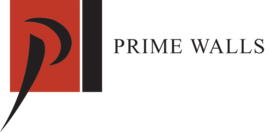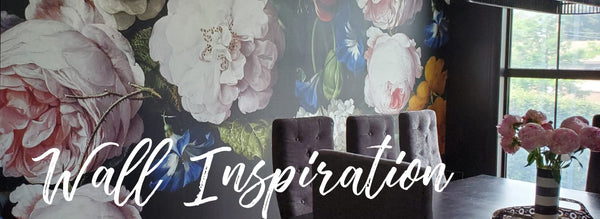Posted on November 16 2017

The rising popularity of digital prints means designers will want to keep an open eye on this type of wallcovering. Often used in one section of the room as a feature wall, digital prints are different from wallpaper since they are produced as panels rather than rolls. Additionally, some wallpaper sites offer in-depth customization options that allow designers and clients to change attributes such as image scale, color, and text.
In this article, we will be discussing digital print substrates (materials) and what you need to know when choosing a product. We’ll also be taking a look at fire testing regulations. Whether it’s for a residential homeowner or a commercial application, knowing how the space is used can help you determine which digital print product is best suited for the job.

Curated Bespoke Murals 2001011 - Morning On The Mountain
What is ASTM E84?
ASTM E84 (American Society for Testing and Materials Test Method E-84) is the officially recognized test used to evaluate how a material burns. Through this standard procedure, a product’s fire spread index and smoke developed values are determined, which indicates whether a material meant for interior applications may be accepted for appropriate use.
When a wallcovering product is to be tested, it is sent to an organization that specializes in this type of service. Often times, they will respond with a short report that details the product, test, results, and the resulting certification (i.e. whether or not the material adhered to or failed the standards of the test).
When testing a material, it is compared to surfaces with a 0 FSI (e.g. reinforced cement) and 100 FSI (e.g. red oak) in order to provide an independent value based on the material being tested.
Class Rating and Flame Spread Index
Tested materials fall into three classes, each with their own range in the flame spread index (FSI). Simply put, the FSI is a calculation resulting in a number that indicates how fast and far fire spreads on the material’s surface within a specific amount of time. When classifying materials that are tested, the three classes are:
- Class I/A: 0 – 25 FSI
- Class II/B: 26-75 FSI
- Class III/C: 76 – 200 FSI
In other words, fire spreads slower and less on class I than it does on class III. Calculating the FSI is a process that takes place in a controlled environment and while it attempts to measure the speed and area of fire spread, it does not take into account how the fire spreads across the surface (i.e. the behavior or direction of travel).
Smoke Developed Values
Usually measured alongside a product’s FSI, the smoke developed values (SDV) measures how much smoke a product emits while burning. For all three classes, the values range from 0-450 and is an independent number based on the material being tested.
Why These Values Matter
Depending on a wallcovering’s classification, this may limit how much of a home or room that can be covered with wallpaper or a digital print. For example, in Chicago, class 2 materials cannot cover more than 7500 square feet of wall space while class 3 materials cannot be over 5000 square feet (there are some additional restrictions – see the link for more information). This type of information is available through the International Building Code and while the US has adopted these regulations, they will differ from country to country.

What To Look For When Buying Digital Print Wallpaper
Independent of the FSI ratings, wallpaper generally falls into one of the following categories:
- Type I (Light-duty): Low traffic areas, minimal contact (light scuffing)
- Type II (Medium-duty): Medium-high traffic areas, medium-high contact (medium-high scuffing)
- Type III (Heavy-duty): High traffic areas, high contact (high scuffing)
Thus, then looking for digital prints for your next project, keep both the FSI and Wallpaper Type in mind. Both of these specifications will help determine which product is best suited for the intended space.
The Prime Walls Advantage
At Prime Walls, our contract quality digital wallpaper murals are printed on type II vinyl materials, which allow for a balance between flexibility, versatility, and durability. Produced with quality in mind, this substrate can be used for high traffic areas such as hotels, hospitals, hallways, classrooms, and other public spaces. Vinyl surfaces are easier to clean than other wallpaper materials, making it an excellent choice for cafeterias, cafes, and restaurants. Based on ASTM E84 regulations, our digital wallcoverings are also fire retardant.
Imagining Your Space
With all the technical information above, let’s move on and take a look at the visual elements of digital wallcoverings and how they can be used to breath life into a space:
Health: Hospitals, Waiting Rooms, Dentists

Custom Murals Rose-100 - White Rose
For the healthcare industry, focus on light colors that invite visitors into a space while simultaneously making them feel confortable, relaxed, and welcomed. One example is this nature-themed digital print featuring a large-scale blooming rose. The soft white color palette maintains a sense of professionalism while giving a wall an added edge in visual design.
Food: Restaurants, Café, Cafeterias

Japanese tree Custom Murals Tree-100 - Japanese Tree
This Japanese Tree mural has an elegant appearance, giving the space a sophisticated, high-end feel. Perfect for a trendy Asian eatery, the sepia colors have a glamorous, classic look.

Coffee image Quattro 457039 - Coffee
For a café, this digital print features photorealistic coffee beans, which is sure to set the tone. With an almost geometric look in its repetition, this is a digital mural that boasts warm colors, great for any coffee shop
Retail: Clothing, Jewelry, Accessories

Blue Tye Die Curated Bespoke Murals 2001008 - Denim Tie-Dye
For any retail space, a good tip is to use abstract patterns in order to focus on colors rather than a specific theme. This is especially important of the business owner would rather put the emphasis on the store merchandise with the walls décor being complimentary. An example is Denim Tie-Dye digital mural, which features a beautiful watercolor aesthetic.


0 comments